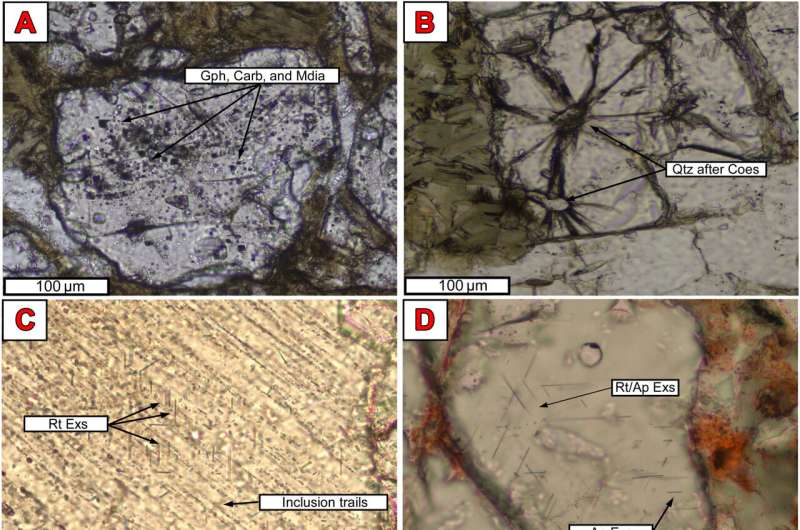


A trio of researchers from James Cook University, working with a colleague from the University of Adelaide, has found metamorphic diamonds in rocks near Australia's northeast coast. In their paper published in the journal Science Advances, Alexander Edgar, Ioan Sanislav, Paul Dirks and Carl Spandler, describe how they found the tiny diamonds and why they believe the find will help reveal more about the early history and formation of Australia.
Metamorphic diamonds are very rare, they only form in very specific places. They are also very small—from microscopic down to nano-sized. The unique diamonds form in —the pressure of opposing plates grinding against one another over millions of years results in the creation of diamonds so small they cannot be seen with the naked eye, which is why they are so very rarely found. They have only ever been found in six other places on Earth. In this new effort, the researchers found a bunch of them inside of rocks along the Clarke River Fault, which came about when crustal blocks were pushed together approximately 500 million years ago.
The researchers began investigating the rocks along the after they were told by one of their students of some formations they had observed that looked like they might have been revealed when one of the pushed them above the surface of the ground around them.
The researchers ventured to the site and collected some of the rocks and brought them back to their lab for study. There they sliced them into very thin slabs and used Raman spectroscopy to help identify the minerals held within. In so doing, they found evidence of silica, amphibole, apatite, lamella of rutile, coesite, quartz and most importantly, metamorphic diamonds.
The researchers note that the diamonds they observed were the first to be found in the Gondwana-Pacific part of the Terra Australis Orogen. They also suggest that because metamorphic diamonds can only be created under very specific conditions, the study of them and the locations where they are found could provide more clues about how Australia was formed.
© 2022 Science X Network
Citation: Discovery of metamorphic diamonds in northeast Queensland could provide clues about how Australia was formed (2022, July 29) retrieved 29 July 2022 from https://phys.org/news/2022-07-discovery-metamorphic-diamonds-northeast-queensland.html
This document is subject to copyright. Apart from any fair dealing for the purpose of private study or research, no part may be reproduced without the written permission. The content is provided for information purposes only.









 Add Category
Add Category